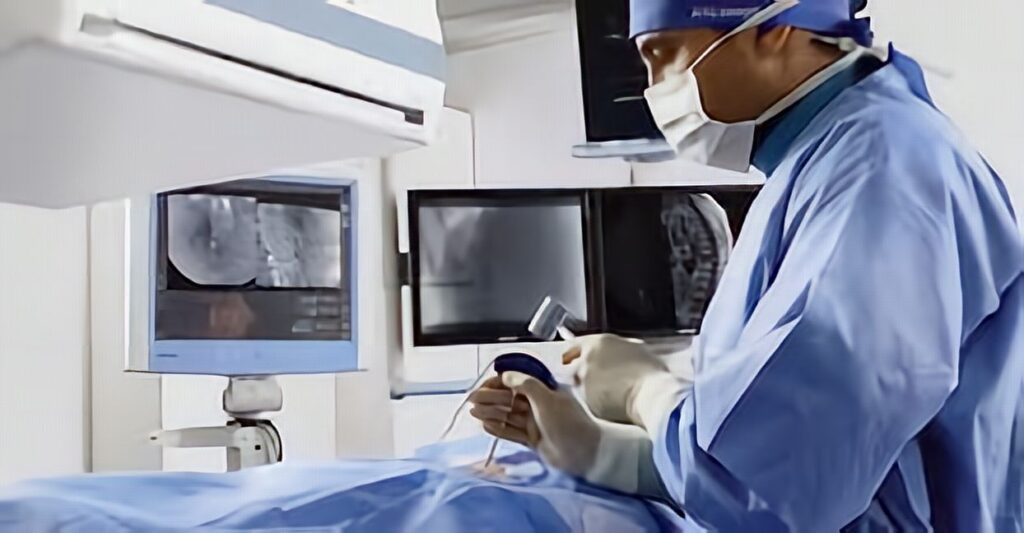Revolutionizing Vascular Health: A Deep Dive into Interventional Radiology Stents

Vascular health has long been a critical concern for medical professionals and patients alike. The circulatory system, responsible for delivering oxygen and nutrients to every cell in the body, can be plagued by various conditions that impair its function. Thanks to advances in medical technology, interventional radiology stents have revolutionized the field of vascular health, offering minimally invasive solutions to a wide range of conditions.
The Evolution of Vascular Stents
Vascular stents are small, mesh-like devices that are designed to be inserted into blood vessels to support their structure and maintain proper blood flow. These devices have come a long way since their inception, and they now play a crucial role in modern healthcare. Their development was driven by the need to address cardiovascular diseases and other vascular conditions that can lead to life-threatening consequences.
Early vascular stents were simple, tube-like structures made of materials like stainless steel. However, these stents had limitations, such as a high risk of re-narrowing (restenosis) and potential complications related to their use. This led to the exploration of new materials and designs, ultimately resulting in the revolutionary field of interventional radiology stents.
Interventional Radiology Stents: A Game Changer
Interventional radiology stents have transformed the treatment of vascular conditions. Unlike traditional surgical methods, which often involve open procedures and lengthy recovery times, interventional radiology stents offer minimally invasive solutions. This means smaller incisions, reduced risk of infection, and shorter hospital stays.
One of the key innovations in this field is the drug-eluting stent. These stents are coated with medications that help prevent restenosis by inhibiting cell proliferation. By releasing these drugs directly at the site of the stent, the chances of restenosis are significantly reduced. This approach has been particularly effective in treating coronary artery disease, peripheral artery disease, and other conditions.
A Multitude of Applications
Interventional radiology stents are versatile and are employed in a wide range of applications. The most common conditions treated with these stents include:
Coronary Artery Disease: The leading cause of heart attacks, coronary artery disease is often treated with drug-eluting stents. These devices help keep the coronary arteries open and prevent blockages.
Peripheral Artery Disease (PAD): PAD affects blood flow to the limbs, often causing pain and discomfort. Stents can open narrowed arteries and restore blood flow, improving the quality of life for those affected.
Aneurysms: Stents are used to reinforce weak or damaged blood vessels, preventing potentially life-threatening ruptures.
Renal Artery Stenosis: This condition can lead to high blood pressure and kidney problems. Stents are used to widen the renal arteries and restore normal blood flow.
Cerebral Aneurysms: Stents are also employed in the brain to treat cerebral aneurysms, reducing the risk of rupture and associated complications.
Patient Benefits and Advantages
The use of interventional radiology stents offers several advantages for patients. One of the most significant benefits is the reduced risk of complications. Minimally invasive procedures typically lead to shorter recovery times, fewer postoperative infections, and less scarring. Patients can often return to their daily activities more quickly, and this can have a positive impact on their quality of life.
Moreover, the ability to target specific areas and deliver medications directly at the site of treatment minimizes side effects and maximizes the therapeutic effect of the stent. This precision is especially important in conditions like coronary artery disease, where the delicate balance of blood flow is crucial.
Challenges and Future Directions
While interventional radiology stents have revolutionized vascular health, there are still challenges to overcome. Restenosis, though reduced with drug-eluting stents, remains a concern. Researchers continue to explore new materials and drug coatings to further decrease this risk. Additionally, patient selection and proper stent placement are essential to ensure the best outcomes.
The future of interventional radiology stents is promising. Advancements in materials science, 3D printing, and biotechnology are likely to result in stents that are even more effective and tailored to individual patient needs. Moreover, the integration of artificial intelligence into stent design and placement is expected to enhance precision and reduce complications.
In conclusion, interventional radiology stents have transformed the field of vascular health. These remarkable devices offer minimally invasive solutions to a multitude of conditions, providing patients with faster recovery times and improved outcomes. While challenges remain, ongoing research and innovation promise a bright future for vascular health, where stents will continue to play a pivotal role in saving lives and enhancing the quality of life for countless individuals worldwide. As medical science advances, so too does the potential for interventional radiology stents to evolve and revolutionize the field even further.
